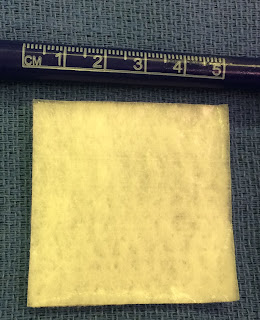The basic treatment of syndactyly has not changed in many years. The essential surgical care includes the creation of a web space (the ‘commissure’) with a flap and zig- zag incisions to the tips of the fingers to allow separation without straight- line scars (which can contract). There is no doubt that our understanding of syndactyly has improved over the years and there have been many technical advances including variations on the commissural flap and modifications based on the exact type of syndactyly. Reports on reconstructing syndactyly without skin grafts have offered exciting new potential although many congenital hand surgeons continue to use grafts suggesting that results are not universally ideal. I have written many times on syndactyly- check for those posts HERE.
Recently, Dr Landi reported outcomes using a new concept in the treatment of syndactyly.
This article describes the use of a hyalruonic acid scaffold to fill in the defects instead of skin grafting for
syndactyly reconstruction. The results are very good.
Article link This material has become available in the United States and I wanted to share a recent case of ours.
This one year old child has bilateral cleft hands and cleft feet. He has a complete, cutaneous (skin only) syndactyly of the ring and small fingers bilaterally.
 |
| Cleft hand with ring/ small finger syndactyly |
 |
| Cleft hand with ring/ small finger syndactyly, palm view |
In an effort to improve function and independence of the two fingers, he was brought to the operating room for bilateral syndactyly reconstruction. We discussed using skin grafts but elected to proceed with the hyaluronic acid scaffold. The ‘hyalomatrix’ works as a hydrophilic gel which allows cellular migration onto its 3D scaffold. Skin cells can then migrate to allow healing.
 |
| Hyaluronic acid scaffold |
 |
| Hyaluronic acid scaffold- shiny side later peels off. |
Here are a few pictures after the surgery.
 |
| Syndactyly reconstruction with hyaluronic acid scaffold, palm view |
 |
| Syndactyly reconstruction with hyaluronic acid scaffold, dorsal view |
It is too soon to know if this material will dramatically change the treatment of syndactyly. But it does seem to be an important step forward to minimize or eliminate the need for skin grafts (with the accompanying scar). More to come on this treatment.
Charles A. Goldfarb, MD
My Bio at Washington University
congenitalhand@wudosis.wustl.edu






